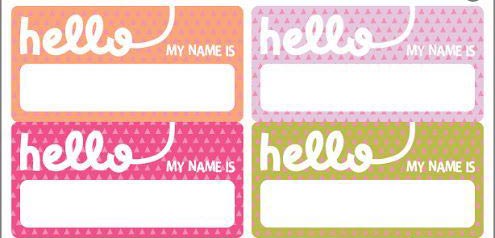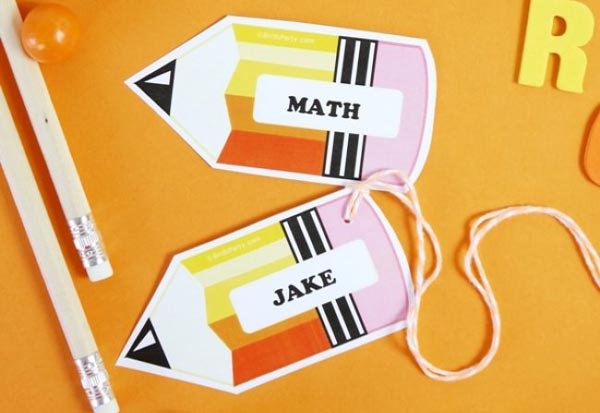The start of a new school year or semester, meeting a new group, or the first lesson with an old one after a long break - events are both exciting and frightening. No matter how many years you teach, feeling “butterflies in your stomach” before September 1st is a good and commendable thing, because it means only one thing - youDO care ☺.
Each acquaintance with a new group is preceded by a huge number of questions: what kind of students will be in my class, what are their interests, what do they like, why are they learning English, and, of course, will they like me?!
I am sure that any teacher wants to get on the same wavelength with students at the first lesson, win them over and make a good impression.
Atmosphere
1. musicconnects people . Before the lesson, create a favorable atmosphere with the help of .... music!
For students, getting to know a new teacher is also stressful. Cross the threshold of an empty and quiet classroom in anticipation of a new, unfamiliar teacher (what if he turns out to be an evil and scary gray wolf? :) reallynerve racking. If, just before the lesson, you turn on pleasant, joyful, quiet music in English, this will help relieve tension and defuse the situation.☺
2. Transform the classroom. It would be great to decorate the classroom with posters, catchy and inspiring quotes in English, funny pictures - in other words, everything that will be entertaining and useful to your students. Rest assured, they will look at and discuss these posters with great interest.
3. Smile and positive attitude. Remember to smile, be calm and relaxed. Today is the rare case when you do not need to introduce a new grammar and explain the difference between Present Perfect and Past Simple.
Just have fun and get to know your students ☺
Purpose of the first lesson
The main goal of any first lesson is to introduce the teacher to the group, to establish that very first contact, as well as to introduce students to each other.
As you develop materials for Lesson 1, keep the following points in mind:
- give up grammar exercises - leave the repetition of grammar for the next time;
- choose activities of a communicative nature, aimed at conversation, exchange of opinions, communication;
- Alternate individual, group and tasks in pairs.
Lesson start
Hello, my name is Nana and I will be your teacher this term. And what is your name?
— My name is…
-Nice you meet you, …! How are you today?
-…
Approach each student, smile, greet him/her and ask him/her name, how are you. Give everyone a little attention
Nametags
Naturally, you will not be able to immediately remember who's name is. So are your students. So ask your students to write their names on the cards you prepared in advance.

Nametags useful to you not only to remember who is who. This is a great tool for forming groups and couples.

Ideas for the 1st lesson in a new group
You and your students need to get to know each other better, right? I would like to do this in an interesting and creative way, so catch the following tasks:
# 1. Acquaintance

Prepare sheets of paper with a drawn star in advance.
Have your students write their name in the center of the star. Everyone has itAt the end of the star, students must write an interesting/unusual/funny fact about themselves.
Complete this task with your students - they will nice to know something about their teacher☺
If you are working with children, give them the task not to write, but to draw what they love (subject, hobby, etc.)
#2. Tell me about yourself
Ask each student to write their full name in English, then for each letter of your name, come up with a word that characterizes him / her in some way.
For example, my full name is Narine:
N - nice
A - apple (cause it's my least favorite fruit)
R - runner (I am into running)
I - introvert
N - Nizhny Novgorod (my hometown)
E – English teacher
# 3. Get to know each other
Divide the class into pairs. To do this, place the name cards in one place (for example, in a box), shuffle and draw 2 cards without looking. Those you have drawn will work together.
In a certain time, each couple will have to learn as much information about each other as possible (you can briefly indicate the topics that they can talk about). Then each student should introduce their partner to the new group.
#4 Truth or lie
It's time to find out how your students spent their summer holidays. For this task, you will need small pieces of paper that will say “truth” or “lie”. Each student pulls a piece of paper and briefly tells how he spent the summer - depending on what is written on the card, the student speaks either the truth or fiction.
The rest ask additional questions to guess if he/she is telling the truth or not.
# 5. Final part
I think that in the end it will be great if the students take the initiative in their own hands and take part in the organization of their educational process.
To do this, divide the class into groups. For each group, select whatman paper, pencils, felt-tip pens, that is, everything you need for creativity. Ask them to come up with and write down the rules of conduct in the classroom ( for example: listen to others), their duties ( for example: clean up the space after the class is over), set goals they would like to achieve ( by the end of this term I will…). Then ask them to present their work, and then give each work its place of honor in class.
At the end of the lesson, be sure to thank your students for being active, praise them, ask if they have questions, etc. Don't forget to praise and reward yourself for a great first lesson - you deserve it! And after such an excellent start, I am sure that the entire academic year will be no less successful!



